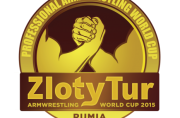LESIONES EN LA LUCHA DE BRAZOS
La ejecución correcta de los ejercicios es la manera de solucionar los problemas de este tipo, los soportes externos son soluciones temporales.
Los movimientos de la lucha de brazos no son naturales para nuestros brazos, por lo que acarrean muchas lesiones especialmente en nuestros codos. Se ejerce demasiada presión en la parte interna y externa de nuestros codos. El codo interno se lesiona en tempranas fases de nuestro deporte especialmente en posición de gancho (tirando por dentro). Se cura pero si no tiene tiempo suficiente de fortalecerse tanto como lo estaba antes de la lesión, esta vuelve a ocurrir una y otra vez y llega a convertirse en una lesión crónica. Con el tiempo nos damos cuenta de que no podemos forzar esta zona como solíamos hacerlo.
La lesión en la parte externa de nuestro codo se produce con el tiempo como resultado de un sobreesfuerzo. La lesión de epicondilitis lateral es más difícil de curar porque en la mayoría de los casos no es el resultado de una sola lesión.
Otras lesiones que he experimentado son: La parte inferior del flexor de mi muñeca, los nudillos centrales de mis dedos, parte alta y baja de mis hombros.
Otra de las razones más comunes de lesión que he experimentado es el desequilibrio de los grupos musculares. Por mis propias lesiones de codo tengo que tirar por fuera pero sin utilizar el antebrazo en posición supina por causa de un serio desequilibrio pronator- supinator y esto provoca lesiones.
El mismo problema de desequilibrio muscular también ocurre con los flexores y extensores de la muñeca. Lo mismo se puede decir de los dedos. Muchos atletas tienen esos problemas con el desequilibrio entre los bíceps braquiales y los tríceps. Mi consejo es que debemos entrenar siempre los músculos opuestos incluso aunque no lleguemos a nuestros límites.
Estos entrenamientos no tienen que ser muy frecuentes pero si queremos reducir el riesgo de lesionarnos debemos entrenar los grupos musculares opuestos para generar un equilibrio. Sugiero también hacer entrenamientos tipo bodybuilding fuera de temporada.
Es buena idea añadir entrenamientos de movimientos completos a los de movimientos parciales y estáticos. Aconsejo esto no porque yo haya seguido muy bien mis propios consejos sino porque he sufrido mucho cometiendo muchos errores. He tomado muchas clases de medicinas, suplementos y terapias pero me he dado cuenta de que el mejor medio para mantenerse sano es mantener vuestro sistema de trabajo como se diseñó.
La ejecución correcta de los ejercicios es la manera de solucionar los problemas de este tipo, los soportes externos son soluciones temporales.
(Artículo de Engin Terzi publicado en Armpower.net y traducido por Pedro Polo)
Injuries in armwrestling
Exercises in right ways is the way to fix the problem from its root, while the outside supports are just temporarily solutions.
The sport of armwrestling is not a natural movement for our arms, therefore so many injuries are happening especially on our elbows.
It puts so much pressure on in and outside of our elbows. The inner elbow gets injured in early stages of our career especially when pulling in hook positions. It heals but if not giving enough time to become as strong as how it was before the injury then it happens over and over and then becomes a chronic injury. With time we realize that we cannot force that area as we used to do.
The injury of the out side of our elbow comes with time as a result of over use. And it is even harder to heal this lateral epicondylitis injury because it is not a direct result of a single injury in most of the cases.
The other injuries that I have experienced are; the lower side of my wrist flexer, middle knuckles of my fingers, front and back side of my shoulders. Another most common reason of the injuries that I have experienced was the imbalanced muscle groups. Because of my inner elbow injuries I had to armwrestler in an outside style but not using the forearm in a supinated way caused serious pronator-supinator imbalance and this caused injuries.
The same muscle imbalance problem also happenned with the wrist flexer and extensors as well. Same thing can be said for the fingers as well. Most of the pullers have these problems about the bicep-brachiradialis and tricep muscles imbalance too.
My advice is that we should always train the opposite muscle groups even though we don’t really push our limits. These trainings don’t have to be very often either but if we want to reduce the risque of injuring ourselves then we should train opposite muscle groups to create a balance. I also suggest to do body building type of trainings during the off season.
It is a good idea to add full motions trainings to the partial movement & statics as well. I am advicing these things not because I have followed my own advices very well but because I suffered so much by making such mistakes. I have used many kind of medicines, supplements and therapies but I realised that the best way to keep yourself healthy is to keep your system working as it is created.
Exercises in right ways is the way to fix the problem from its root, while the outside supports are just temporarily solutions.
Engin Terzi
http://en.armpower.net/article/en/injuries-in-armwrestling-3485.html






 Armpower
Armpower Armwrestlers Only
Armwrestlers Only European Armwrestling Federation
European Armwrestling Federation Federación Española de Deportes de Personas con Discapacidad Física
Federación Española de Deportes de Personas con Discapacidad Física SPORT AND ART
SPORT AND ART The Armwrestling Network
The Armwrestling Network World Armwrestling Federation
World Armwrestling Federation World Armwrestling League
World Armwrestling League Xsportnews
Xsportnews Zlotytur
Zlotytur
